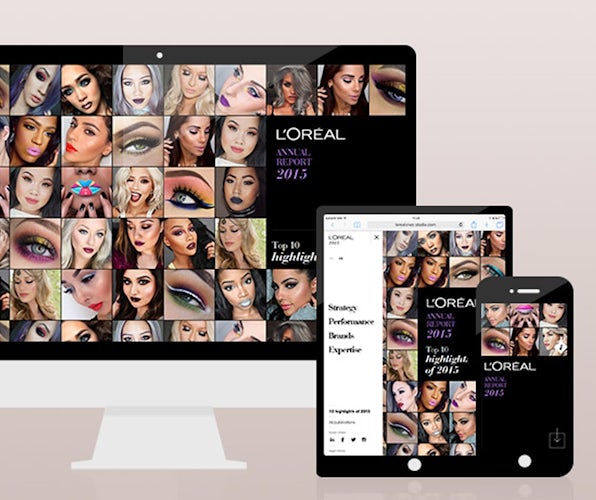L’Oréal moves into wearables for the first time with UV light tracking device
The battery-free device is worn on a user’s thumbnail, and monitors how much UV light the wearer is exposed to.

L’Oréal is bringing out its first ever wearable device, as it looks to move the market on from “clunky” pieces of tech to something “organic”.
Launching at the 2018 Consumer Electronic Show (CES) today (8 January), UV Sense looks to help consumers keep track of how much sunlight users are exposed to – and encourage them to protect themselves against harmful UV rays.
The beauty giant says the device is the first battery-free electronic UV sensor, and marks L’Oréal’s official launch into the wearables market.
It works like this: UV Sense is less than 2mm thick and is designed to be worn on the thumbnail, which L’Oréal calls the “optimal” place for measuring sunlight.
It measures individual UV exposure and provides real time information, stores up to three months’ worth of data and shows trends of exposure over time.
Through an accompanying mobile app, wearers can access information indicating when they should be mindful of their UV exposure and therefore apply more sunscreen or seek out the shade.
Today when you look at wearables on the market, it is saturated around wristbands and clunky electronics. [Ours] is truly wearable.
Guive Balooch, L’Oréal
If this device feels familiar, you’d be right. In 2016, the company launched My UV Patch, a stick-on UV patch also aimed at monitoring UV exposure.
Since its debut, L’Oréal’s La Roche-Posay brand has distributed more than one million patches to consumers in 37 countries. Consumer research also shows it has a positive impact on “sun safety” behaviours, with 34% of people applying sunscreen more often and 37% trying to stay in the shade more frequently.
Spurred on by these figures, the FMCG conglomerate decided to “take it to the next level” and create a device that is smaller, lasts longer and collects data.
Guive Balooch is global vice-president of L’Oréal’s Research and Innovation Technology Incubator, which developed UV Sense. He believes the device marks “the future of wearables”.
“Today when you look at wearables on the market, it is saturated around wristbands and clunky electronics. [Ours] is truly wearable – you wear it on your nail in an organic way. It is our first true wearable platform,” he tells Marketing Week.
Taking a conservative approach to data

With the device storing up to three months’ worth of data, L’Oréal says it decided to take a “conservative” approach by only storing anonymised information about individual users.
Part of the reason for this, Balooch says, is that people will “use the product better” if they aren’t forced to enter their personal details or log in.
“That’s the most important thing. If you look at the reason why, if people can change their behaviour in the sun, it’s good for business but also good for their lives. That doesn’t mean we can’t do interesting things with the anonymised data, like look at global trends and behavioural changes,” he says.
The device will be piloted in the US this year, with the consumer launch planned for 2019. UV Sense will also hit the UK market next year. An updated limited-edition version of the My UV Patch will also be relaunched this year, which Balooch says will look “more like a jewellery piece”.






